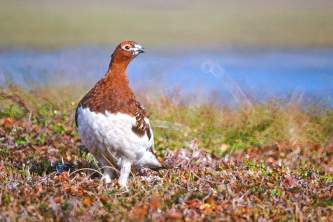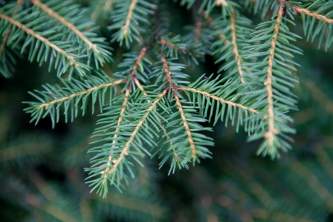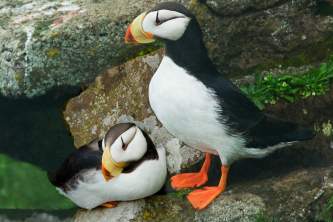Picking a Kayaking Campsite
A good camping spot is one where you have enough room to set up your tents above the high tide line. Camping on gravel beaches is ideal and you should avoid muskeg if you want to keep dry. Also, refrain from clearing vegetation at all costs unless it's an emergency situation.
Access to your campsite may change with the tide. If you arrive at your campsite at low tide, you can continue paddling for a couple hours while you wait for the tide to come in or you can start lugging your gear to the high water mark. In some cases, you might have a couple hundred yards, in others less than a hundred yards. Unless you have a nice beach you’ll likely have lots of hard scrabble and nasty, slippery rock to cover. There's no great way for handling it so watch your footing and take your time. Make sure someone’s watching the boats the entire time you’re shuttling your gear to camp. You need to be smarter than the tides!
Campsites aren't often noted in any way. You have to look for them. If you have one or two tents, you’ll find somewhere to camp even in the busy season becaise smaller groups have a lot more latitude in where they choose to camp than groups with three or more tents. Campsites operate on a 1st come, 1st served basis. You can always ask if there’s room for your tents at an already occupied site, or if the current occupants know of other close options. Proper etiquette within the kayaking community is to use a camp for one night, then move on to avoid tying up the site.
Having some general information about camping options goes a long way, especially during the busy summer season. A variety of campsite and cabin options can be found here on the Alaska App or at Alaska.org. The Forest Service provides hard-copy maps showing most sites and the Glacier Ranger District office in Girdwood has information about group size capacity for campsites (907-783-3242).
Also keep in mind that reviewing your paddle plan and camping options with water-taxi, rental service, or local guide services may get you good, current tips on things like tent capacity, drinking water, and so on. Boat charters and guide services can also provide information on ‘traffic’ in the particular area where you’re paddling. Within paddling distance of port, especially during high tourist season (June 20th - August 10th) it’s difficult to monitor volume of kayak traffic, and it’s common for popular sites to fill up quickly. Building additional time into your paddle plan for finding a campsite in these areas during high season is recommended. This is particularly true in Harriman Fjord in July. Many paddlers hire boat charters for access to more remote kayaking and camping areas this time of season.




